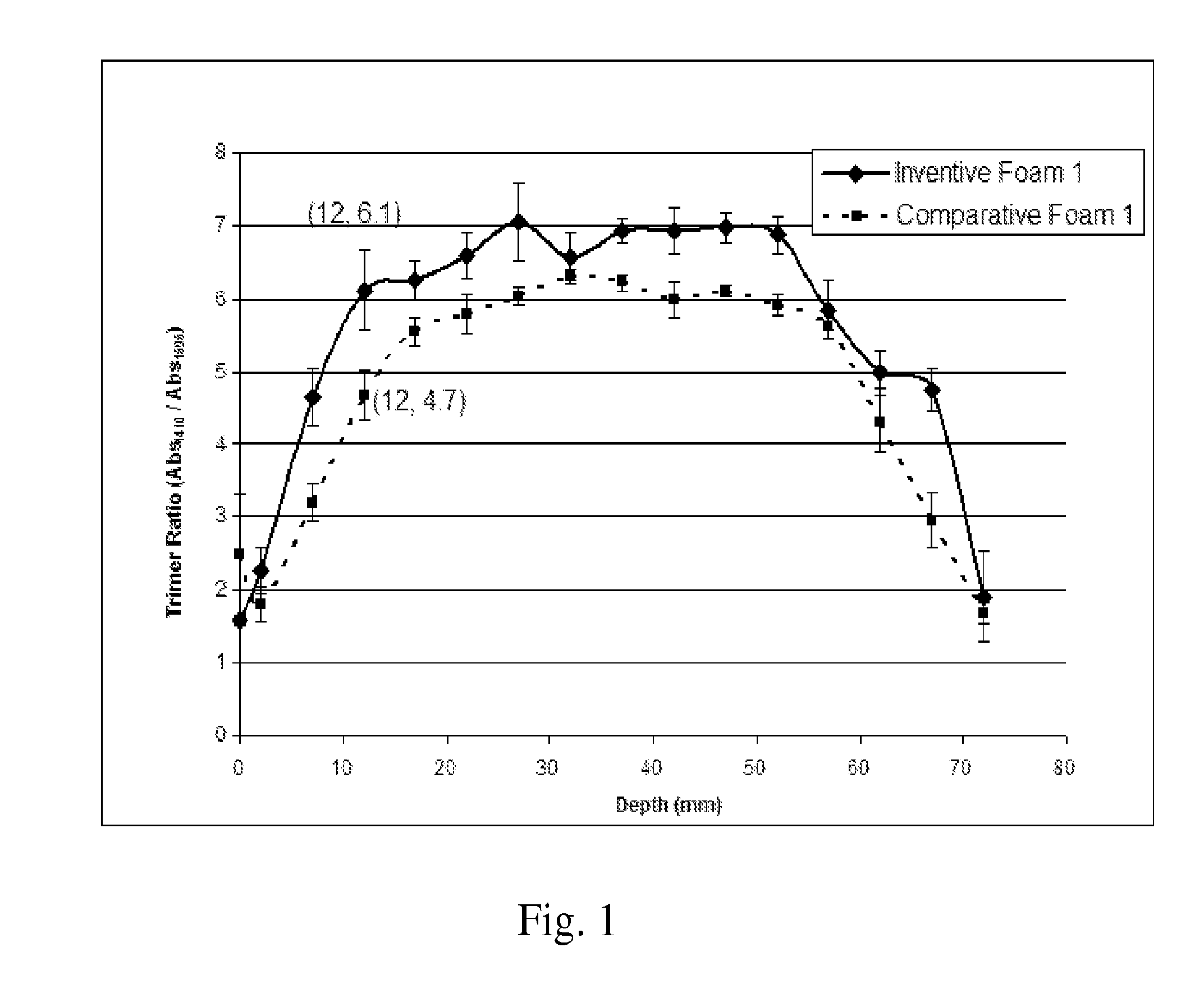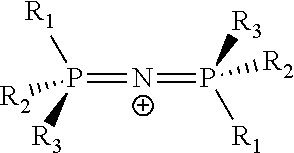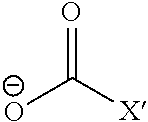The instant invention provides an
isocyanate trimerisation catalyst
system, a precursor formulation, a process for trimerising isocyanates, rigid foams made therefrom, and a process for making such foams. The trimerisation catalyst
system comprises: (a) a substituted
iminium cation; and (b) an
isocyanate-
trimer inducing anion; wherein said trimerisation catalyst
system has a trimerisation
activation temperature in the range of equal to or less than 73° C. The precursor formulation comprises (1) at least 25 percent by weight of
polyol, based on the weight of the precursor formulation; (2) less than 15 percent by weight of a trimerisation catalyst system, based on the weight of the precursor formulation, comprising; (a) a substituted
iminium cation; and (c) an
isocyanate-
trimer inducing anion; wherein said trimerisation catalyst system has a trimerisation
activation temperature in the range of equal to or less than 73° C.; and (4) optionally one or more surfactants, one or more
flame retardants, water, one or more antioxidants, one or more auxiliary blowing agents, one or more urethane catalysts, one or more auxiliary trimerisation catalysts, or combinations thereof. The process for trimerisation of isocyanates comprises the steps of: (1) providing one or more monomers selected from the group consisting of an isocyanate, a diisocyanate, a triisocyanate, oligomeric isocyanate, a salt of any thereof, and a mixture of any thereof; (2) providing a trimerisation catalyst system comprising; (a) an substituted
iminium cation; and (b) an isocyanate-
trimer inducing anion; (c) wherein said trimerisation catalyst system has a trimerisation
activation temperature in the range of equal to or less than 73° C.; (3) trimerising said one or more monomers in the presence of said trimerisation catalyst; (4) thereby forming an isocyanurate ring. The process for making the PIR foam comprises the steps of: (1) providing one or more monomers selected from the group consisting of an isocyanate, a diisocyanate, a triisocyanate, oligomeric isocyanate, a salt of any thereof, and a mixture of any thereof; (2) providing
polyol; (3) providing a trimerisation catalyst system comprising; (a) a substituted iminium cation; and (b) an isocyanate-trimer inducing anion; wherein said trimerisation catalyst system has a trimerisation activation temperature in the range of equal to or less than 73° C.; and (4) optionally providing one or more surfactants, one or more
flame retardants, water, one or more antioxidants, one or more auxiliary blowing agents, one or more urethane catalysts, one or more auxiliary trimerisation catalysts, or combinations thereof; (5) contacting said one or more monomers, and said
polyol, and optionally said one or more surfactants, and optionally said one or more
flame retardants, and optionally said water, and optionally said one or more antioxidants, and optionally said one or more auxiliary blowing agents in the presence of said trimerisation catalyst system and optionally said one or more urethane catalysts, and optionally said one or more auxiliary trimerisation catalysts; (6) thereby forming said
polyisocyanurate /
polyurethane rigid foam. The PIR foam comprises the
reaction product of one or more monomers selected from the group consisting of an isocyanate, a diisocyanate, a triisocyanate, oligomeric isocyanate, a salt of any thereof, and a mixture of any thereof with polyol in the presence of a trimerisation catalyst system comprising a substituted iminium cation, and an isocyanate-trimer inducing anion, and optionally one or more surfactants, optionally one or more flame retardants, optionally water, optionally one or more antioxidants, optionally one or more auxiliary blowing agents, optionally one or more additional urethane catalysts, and optionally one or more auxiliary trimerisation catalysts, or optionally combinations thereof, wherein the trimerisation catalyst system has a trimerisation activation temperature in the range of equal to or less than 73° C. The PIR foam comprises the
reaction product of one or more monomers selected from the group consisting of an isocyanate, a diisocyanate, a triisocyanate, oligomeric isocyanate, a salt of any thereof, and a mixture of any thereof with polyol in the presence of a trimerisation catalyst system comprising a substituted iminium cation, and an isocyanate-trimer inducing anion, and optionally one or more surfactants, optionally one or more flame retardants, optionally water, optionally one or more antioxidants, optionally one or more auxiliary blowing agents, optionally one or more additional
polyurethane catalysts, and optionally one or more auxiliary trimerisation catalysts, or optionally combinations thereof, wherein the PIR foam has a
polyisocyanurate trimer ratio (Abs1410 / Abs1595) of at least 5 at a depth of 12 mm from the rising surface of the rigid foam, measured via ATR-FTIR
spectroscopy.
 Login to View More
Login to View More 


